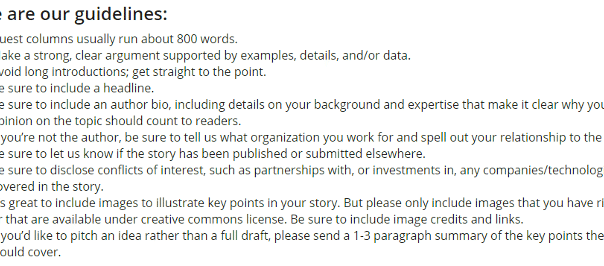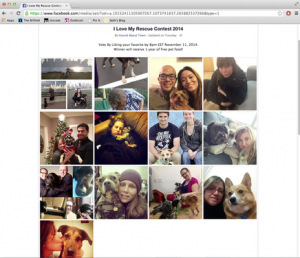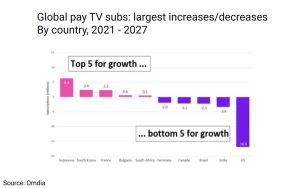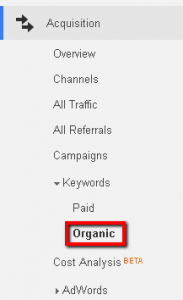As a marketer, writing is one of the most productive things you can do for your career. You don’t have to be seeking attention from creative recruitment agencies in order to benefit from it, either. On a personal level, you grow your personal brand and get an opportunity to show off your communication skills–something that’s valuable no matter your field. From a job perspective, it can help you draw attention to your employer’s company, drive traffic to their site and have a positive impact on SEO.
The advantages to being a published author are many for marketers, but getting started isn’t easy. That’s something I found out the hard way working closely with content marketing recruitment. I’ve spent much of 2016 developing my authorship profile, developing relationships and creating opportunities for myself and others in my business to share our ideas and insights. Now that I finally have some momentum going, I wanted to share some of the lessons I learned so you can avoid making the same mistakes and get a head start!
Pick a Personal Platform
There’s an unbelievable amount of content available on the web. Almost any topic imaginable has been covered in some way. What do you bring to the table that’s unique enough to justify being read over dozens of similar articles and posts?
This is what you need to determine before even beginning writing. What does your online persona bring that’s fresh and new to subjects that have already been covered?
- Unparalleled insight and subject matter expertise?
- An underrepresented perspective on something that everyone is talking about?
- An irresistibly quirky, humorous, or enrapturing writing style?
- Firsthand experiences and stories, or exclusive data and information?
Personally, my “shtick” is that everything I write about concerns marketing career growth and development. I can talk about the subject directly, which few other people do on the web on a regular basis. Or, I can discuss an industry or technology trend in terms of how it matters to marketers and the work they do on a regular basis. Find a similar angle that you’re uniquely qualified to comment on and bring that expertise to the world in all of your writing.
Your First Catches Don’t Have to Be Big Fish
If you’re formulating your ambition as an author today, don’t expect to be on the front page of The New York Times tomorrow. Larger, more prestigious publications have a flood of submissions coming in every day. Distinguishing yourself in the crowd without a reputation to stand on is almost impossible. I targeted large publications myself starting out, and struggled to get any traction at all.
My advice, if you’re first starting out, is to begin with smaller publications even if they have much smaller readership. You can even self-publish on a personal blog or on a site that allows anyone to self-publish like LinkedIn. If you’re currently employed, then it’s likely that your company also has a blog–find out who manages it and ask what kind of content needs they have!
Once you have a wide base of previous works on a variety of other, smaller publications under your belt, it’s much easier to get the attention and interest of larger sites and content hosts. In fact, many of these “bigger fish” will expect you to submit a portfolio of your previous works before even considering you as a potential author.
Thoroughly Research Editorial Guidelines BEFORE Writing
Most blogs and websites that publish regularly and accept external contributions will have easy-to-find, publicly accessible editorial guidelines and directions to submit content.
For instance, here are the relatively straightforward guidelines for VentureBeat.
It might be tempting to write about something you’re inspired to make an article or post on, then send it out to organizations you think would be interested in it until one of them picks it up. In my experience, this simply doesn’t work. If you write something general enough that you think it could find a place on any of multiple websites, then it’s probably so generic that it’s not worth publishing to any of them. Furthermore, articles written in this fashion are often a waste of your time because they don’t adhere to publishers’ submissions and content requirements.
Instead, head into your writing efforts with a few ideas of things you want to write about and the perspective you want to provide. Many publications will expect you to pitch a few ideas to them, then will coordinate with you to decide on an angle appropriate for their audience and brand. If you’ve already written something, you may end up having to rewrite it entirely after your pitch discussion.
In particular, look for any guidelines that explain what kind of self-promotion and linking you’re permitted to do. Publications frequently have very elaborate linking rules. Check out this example from Business 2 Community:

I’ve found that today’s editors tend to be very sensitive about any content that could be construed as “salesy” or in any way promoting a brand or individual. Years of shady SEO practices and aggressive link-building efforts have made publications very phobic to writers who seem obviously in it “just for the links.” If your submissions are riddled with links on obviously keyword-oriented anchor text towards a certain site, expect them to get shot down.
If they allow links (some don’t), they’ll likely have strict rules in place in terms of where and how they’re allowed. Any links that you do include should be extremely relevant and add to the story or case that you’re making. Make an effort to link to several different resources to reinforce the idea that you’re formulating a well-rounded and researched opinion. Bonus points if you link to a previous article that’s already on the publisher’s site!
Don’t Be Afraid to Dig
Most blogs and content publishers have easily-accessible content and submission guidelines. But some–especially the smaller ones–don’t. In that case, you often have to get creative and manufacture your own opportunity. Here are some examples I’ve done in the past to get access to those key decision makers:
- Hunt down corporate email addresses through company directories, web articles and author bios
- Engage editors directly on their social media channels (make sure they use a given social account for professional–not personal–purposes before contacting them this way!)
- Use customer service and sales communication processes to work my way up to the relevant individual
- Contact previous authors on this publication and ask them for advice on contacting an editor or getting content submitted
Though it might take extra work upfront to find the right gatekeepers, I’ve found the additional effort frequently pays off. These blog managers and editors typically get far fewer contributions that you have to compete with, and you’ll have the opportunity to establish a personal connection that can lead to a quick publication.
Be Patient and Stay Organized
Building up a portfolio of published articles and opinions takes time, and a lot of it.
If you’re writing high-quality, valuable content then that will require a substantial time commitment all on its own. And submitting content, communicating with editors, and finally getting published will probably take longer than you think.
After you submit a pitch or request, it could be days or weeks before an editor gets back to you–if they respond at all. And some have huge backlogs of content to be published, or an understaffed editorial team, or very long review and editing cycles. Many publications also operate on an editorial content and prefer to save certain submissions throughout the year for publication during a specific time. For instance, here’s the beginning of this year’s editorial calendar for CMSWire.

I keep a spreadsheet full of publications that I’ve reached out to, which includes links to their editorial guidelines and my notes on specific idiosyncrasies with the site and its editors. The sheet also keeps track of conversations I’ve had with the organization, and previous pages I’ve gotten published there. Having all that information handy makes reaching back out in the future much easier, and helps me avoid spamming any one site with content proposals. Over time, you’ll find doors that you opened weeks or even months ago unexpectedly lead to a new path to publication.
Business & Finance Articles on Business 2 Community(64)








